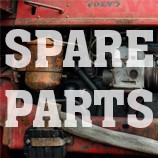 I’m sure we can all agree on a lot of things we like about riding motorcycles. That’s how rallies are born. We love bikes and not surprisingly, we all pretty much love the same music. Mix the two in copious quantities, add some largely unhealthy food and a good road to get there on and you have a bike rally. Others like watching us ride so we often toss in a parade. That seems to make us feel good about who we are and the general population enjoys it the same way we enjoy watching a fire eater. We don’t know enough to do it for whatever reason, but we know a good one when we see them. I imagine that’s how many of the flag-waving spectators at a bike parade feel about us.
I’m sure we can all agree on a lot of things we like about riding motorcycles. That’s how rallies are born. We love bikes and not surprisingly, we all pretty much love the same music. Mix the two in copious quantities, add some largely unhealthy food and a good road to get there on and you have a bike rally. Others like watching us ride so we often toss in a parade. That seems to make us feel good about who we are and the general population enjoys it the same way we enjoy watching a fire eater. We don’t know enough to do it for whatever reason, but we know a good one when we see them. I imagine that’s how many of the flag-waving spectators at a bike parade feel about us.
But when the thunder of the parade fades and nobody’s watching, I think one of the best things about riding is getting to see what others do with their time instead of riding. We get to see these things because as riders we often take the roads less traveled. Two-lane roads often lead past an America that was and I kind of enjoy that.
On a recent ride to Erie, Pennsylvania, I saw at least three reasons to stop which I’d have missed completely if I’d been on the Interstate. The first was in a small town named Cambridge Springs, Pennsylvania, just off route 19. At the turn of the last century Cambridge Springs was the place to go for therapeutic mineral springs and it was the midway point on the railroad between New York City and Chicago. Anything linking to either New York or Chicago was big back then; check both boxes and you had a sure winner. In the late 1800s there were several resort hotels in Cambridge Springs. The Riverside Inn was the last of them and it burnt to the ground this past spring. I stopped by to pay my respects, having discovered the grand old hotel only a few years ago. My wife and I had enjoyed a once-in-a-lifetime outdoor music festival there a few years ago. The hotel’s wrap-around porches were filled with impromptu musical jam sessions as well as scheduled performance and booths filled with artisans. The Riverside Inn was also popular for its live dinner theater events. Though it was only an hour or so from home, I’d never heard of it until I was researching an old pocket watch I have and learned that the watch’s original owner had traveled to the inn seeking relief from his medical woes. After that, I stopped by the inn any chance I’d get. This day I said goodbye as the Bobcat skid loader scooped her ashes into containers behind a chain-link fence. One of the grand hotel’s fountains was still largely intact and surrounded by flowers as was the rear lobby masonry fireplace. A couple of scorched, empty patio chairs watched over the nearby French Creek. This place was as much of a passion to the proprietor and patrons as motorcycles are to us.
A little further north, I pulled off when I saw a full-sized Kaiser-Frasier auto dealership sign. I stopped to check it out even though nobody was around. I imagine the owners are full-blown collectors of the marque as it would be unusual for someone to have such a large piece of automobilia without any supporting cast. Kaiser-Frasier was born in 1945 when Joseph Frazier and Henry J. Kaiser became partners. Kaiser-Frazier offerings included Jeep, Willys, Darrin, and Henry J. Parts of the Kaiser-Frasier, namely Renault and Jeep, were part of the now-defunct American Motors Corporation. So, it’s safe to say whoever displays a larger-than-life Kaiser-Frazer sign in their front yard probably has a car or two to park under it. But while we’re out riding, they’re scrounging Kaiser-Frasier parts. In this example, I become the person watching a bike parade. I enjoy the finished product, the fruits of their labor, but I’m not willing to dedicate my life to the restoration and preservation of the Kaiser-Frazer lineup.
A little further north, in Waterford, Pennsylvania, I rode into Fort Le Boeuf. Now, I know you’re thinking, wasn’t Fort Le Boeuf where the French made Renaults for Kaiser-Frasier? No, but it is where the French built a fort in 1753. George Washington paid the French a visit and asked them to leave. They declined and that was the impetus for the French and Indian War. The men dressed as frontiersman trading pelts outside the Fort LeBoeuf Museum could tell you much more, I’m sure, including the fact that George Washington did sleep in Fort LeBoeuf.
The point is riding at all, especially riding the back roads, puts you in a better position to see, to question and to understand some wonderful things that you won’t see on the Interstate highway. The three examples here all happened on the same hundred-mile ride. Be accepting of those who don’t ride because they just may be the ones making the cool things we see along the way possible.


















